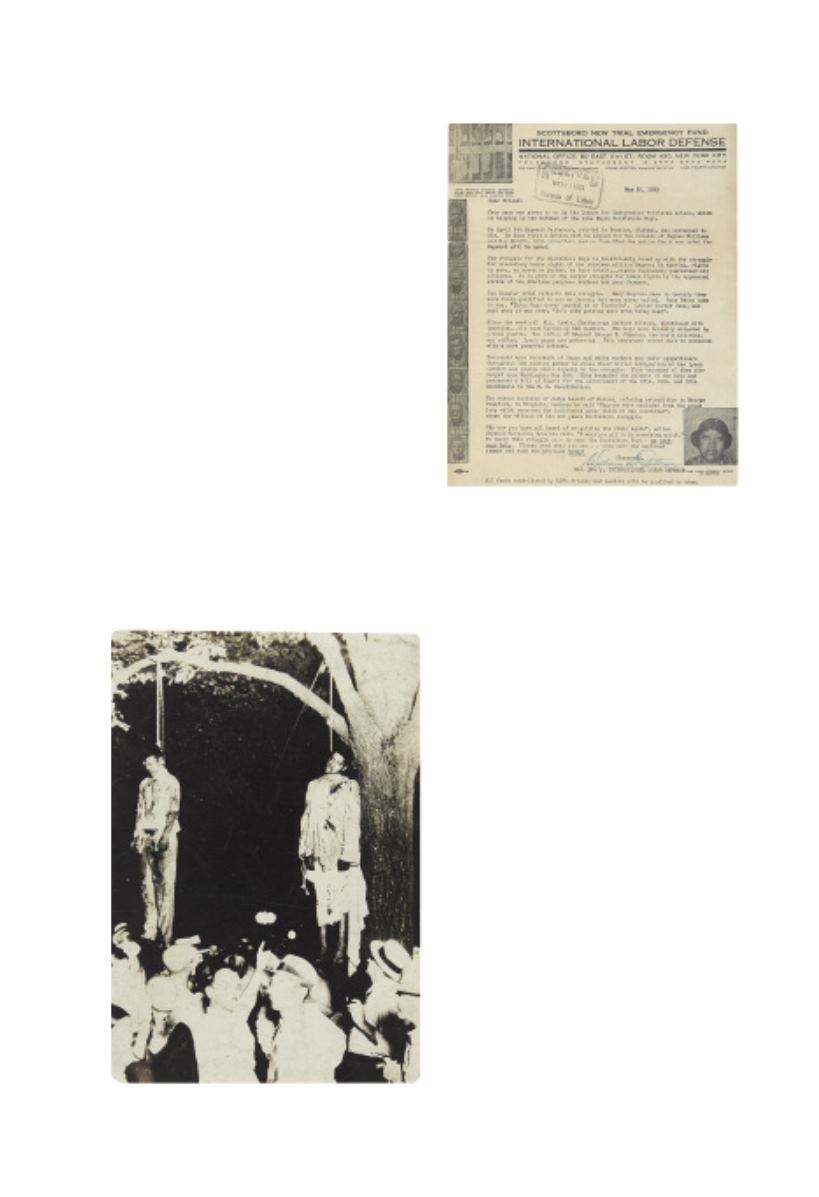

296
●
SCOTTSBORO BOYS.
Scotts-
boro New Trial Emergency Fund.
Printed Letter on special
pictorial
Scottsboro Boys letterhead, Signed by
William Paterson of the International
Labor Defense * [together with] the
printed return mail envelope; the letter has
been restored and linen-backed.
New York, May, 1933
[350/500]
A scarce form letter that was sent to people who
were known to be sympathetic to civil rights
causes and especially that of the Scottsboro Boys.
Instead of the usual “boilerplate” plea for cash;
the letter provides a great deal of information
about the trial, and the case’s history. “The
struggle for the Scottsboro Boys is inextricably
bound up with the struggle for elementary
human rights of the thirteen million Negroes in
America, rights to vote, serve on juries, to fair tri-
als. . .rights supposedly guaranteed all citizens.”
297
●
LYNCHING.
The lynching of Thomas Shipp and Abraham Smith.
Silver
print real photo postcard by Lawrence Beitler, 3
1
⁄
2
x 5 inches.
Marion, Indiana, 1930
[800/1,200]
A gruesome image of a notable lynching. This
is a variant on the usual postcard sized image
which was printed lengthwise, showing more of
the onlookers. The latter image appears as
Number 31 in James Allen’s extraordinary
compilation “Without Sanctuary” (Twin
Palms, 2003). The story of Shipp and Smith
(and the youngest, James Cameron) is a
familiar one. Accused of raping a white
woman—a peculiarly Southern obsession—
these three teenagers were being held in jail,
when an angry mob broke in and carried them
off to be lynched. At the last moment,
Cameron, who looked “very boyish,” was
spared. The NAACP investigated, there was
even a trial of the ringleaders, but all were
found innocent.
296










